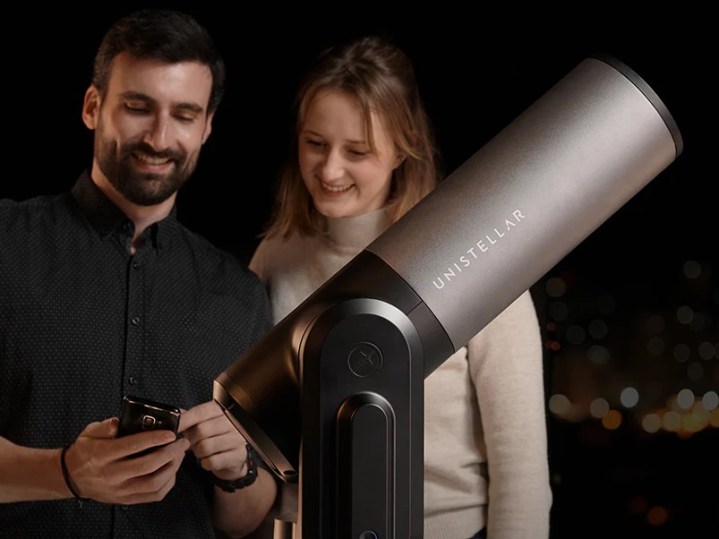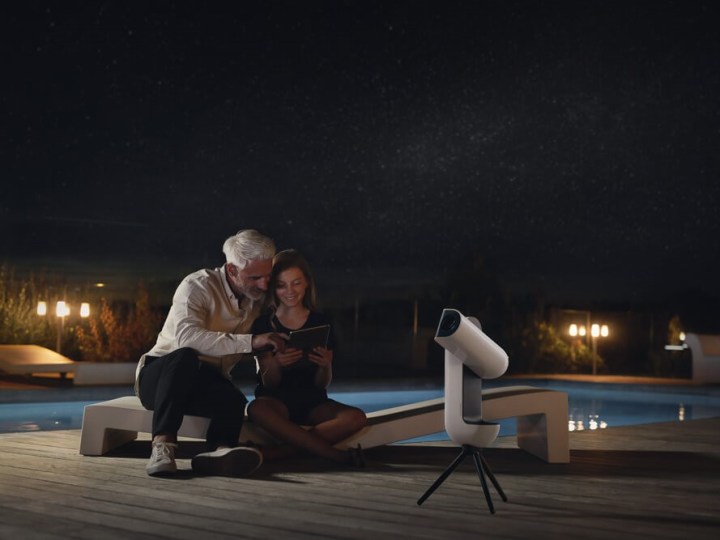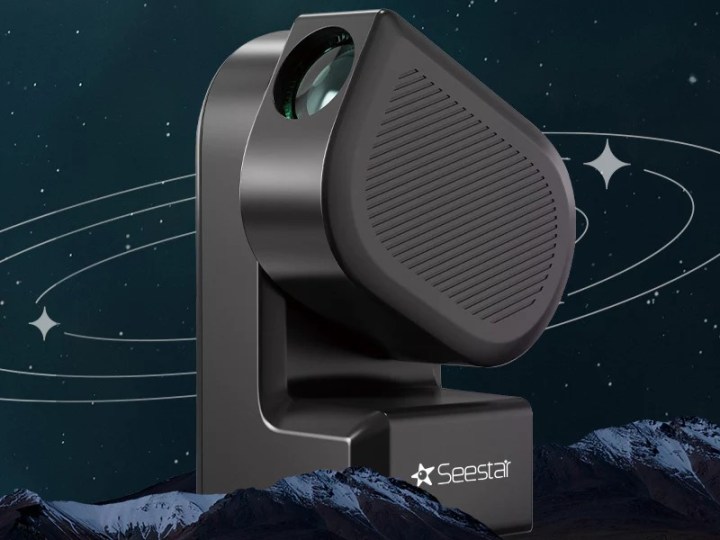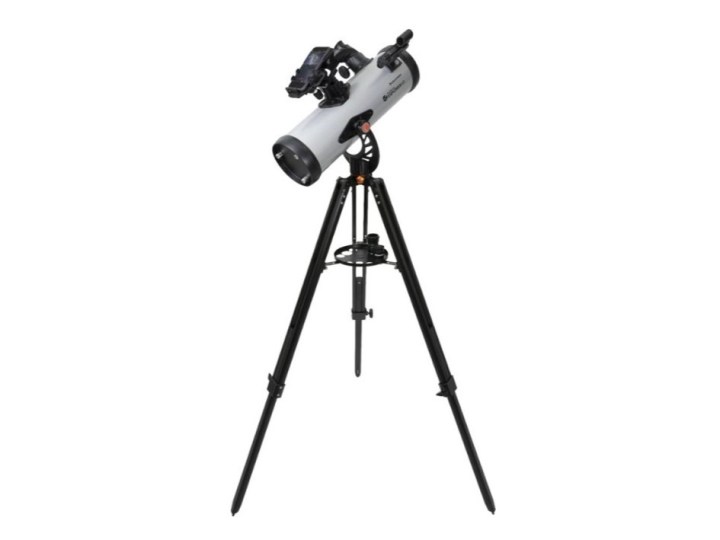For centuries man has been gazing at the stars, noting various anomalies, admiring their beauty, and exploring the vast expanse. Telescopes are generally the tool of choice for stargazing, and even today, that hasn’t changed. But what has changed is the way in which they deliver those views, more specifically through enhanced features and functionality. The best smart telescopes, for instance, beam any images they take to your smartphone or the cloud for safekeeping. Others use reliable star maps to help explore and pinpoint star clusters, galaxies, and stellar objects with absolute precision. Alas, there are so many smart telescope models that choosing one can be a tad difficult, especially for beginners. Don’t fret, we’ve gathered up all of the best smart telescopes right here — with choices for everyone. If you’re not fond of smart features, maybe check out the best telescopes overall.
The best smart telescopes in 2024
- Get the if you want a full-featured and pro-grade telescope.
- Get the if you want a super simple and easy-to-use setup.
- Get the if you want a portable option you can take anywhere.
- Get the if you want a fully-automated and AI-powered telescope.
- Get the if you’re on a tight budget.
Unistellar eQuinox 2
Best overall

| Pros | Cons |
| Android and iOS | Expensive |
| Premium tripod included | |
| Autonomous field detection |
Is it expensive compared to some of the other telescopes? Absolutely. Is it more powerful than a lot of those other options, too? Yes, by up to 100x more powerful than comparable models. You can zoom right in on even the faintest objects, which would be tough to see in smaller, less capable scopes. This one also features Unistellar’s excellent autonomous field detection, which can recognize objects in its field of view, a dedicated and easy-to-use app, and access to a global community of stargazers — Citizen Science.
Vaonis Vespera
Best for beginners

| Pros | Cons |
| Android and iOS | Expensive |
| Built-in tripod | |
| Auto calibration and Star Field Recognition |
The Vaonis Vespera is expensive, yes, though not quite so much as the Unistellar, but it’s still an excellent option for beginners because it’s so easy to use. It can activate and calibrate itself, thanks to Vaonis Star Field Recognition Technology, but also makes it easy to control through the mobile app. It’s water-resistant, too, and will automatically switch off when it starts raining. That gives newbies, and everyone else, plenty of time to pack it away. It’s one of the best automated and amateur smart telescopes money can buy. You can save images, although it’s not ideal for true high-resolution astrophotography, just for sharing.
ZWO Seestar S50 AIO
Best grab and go

| Pros | Cons |
| Android, iOS, Mac | Not for high-resolution astrophotography |
| Built-in tripod | |
| App controls, auto search, and targeting |
The Seestar S50 all-in-one doesn’t officially support Mac, it’s available for Android and iOS, but there have been reports of users getting it to work on their Macbooks. That said, it’s one of the most portable grab-and-go options out there. You can use the app to control it remotely, snap photos, and share your observations on social media. It’s a great telescope for the modern age.
Dwarflab DWARF II
Best with AI built-in

| Pros | Cons |
| Android and iOS | Short focal length |
| Accessories included | |
| AI-powered object recognition and tracking |
While its overall design looks strange compared to some of the other telescopes here, the Dwarflab DWARF II includes some pretty innovative features, namely AI-powered object recognition and tracking. It has a built-in neural network processing unit (NPU) that can automatically recognize and track the movement of stellar objects. If movement slows, it zooms in while the panoramic and telephoto lenses remain in sync for astrophotography. It’s easily controlled via Android and iOS apps, with WiFi and Bluetooth connectivity. Moreover, the dual camera system allows for some pretty great sky shots, something you won’t get with comparable systems.
Celestron Starsense Explorer LT 114AZ
Best on a budget

| Pros | Cons |
| Android, iOS | Limited app features |
| Includes Altazimuth mount and tripod | |
| Real-time sky tracking via the app |
Celestron’s software makes it easy to connect your Android or iOS phones, particularly through the Starsense Explorer app. This Newtonian Reflector telescope comes with an Altazimuth mount and tripod, and is super easy to set up. When connected to the app, it analyzes the night sky in real time to give a personalized experience. Beginner’s will benefit from the user-friendly interface, detailed tutorials, and helpful tooltips as well. But if you don’t want to use any of those features and you’d rather just look through the eyepiece the old-fashioned way, you can do that too.
How we chose these smart telescopes
Unlike standard telescopes, these smart telescopes are meant to be used alongside a digital experience, mainly mobile apps. So, we judged our smart telescopes using different factors, like:
Compatibility
Most of these telescopes are compatible with Android and iOS, and you can access limited functionality from a browser on a PC or Mac.
Price
We chose a range of options from less expensive and budget-friendly to premium offerings with all of the bells and whistles. The Unistellar eQuinox 2, for example, is expensive, but well worth the cost if you have the money. It’s enhanced vision quality and powerful lens can make even the faintest objects look close.
Tripod or Stand
You’ll need to set the telescope down on a tripod both for stability and so you can keep your hands free to work the dials, controls, or the app. Every telescope on this list either comes with a built-in tripod, or has one available as an accessory.
Portability
Some telescopes are best for stargazing in your backyard or a primary location while others are lightweight, portable, and easy to stow for a road or camping trip. Most of the telescopes on this list are suitable for either scenario, with a majority acceptable for travel.
This article is managed and created separately from the Digital Trends Editorial team.
Editors' Recommendations
- The 5 best telescopes for viewing planets in 2024
- The 5 best star projectors that are accurate in 2024
- This smart Celestron telescope is 32% off for Prime Day in October
- Prime Day telescope deals bring discounts on Celestron and Gskyer



